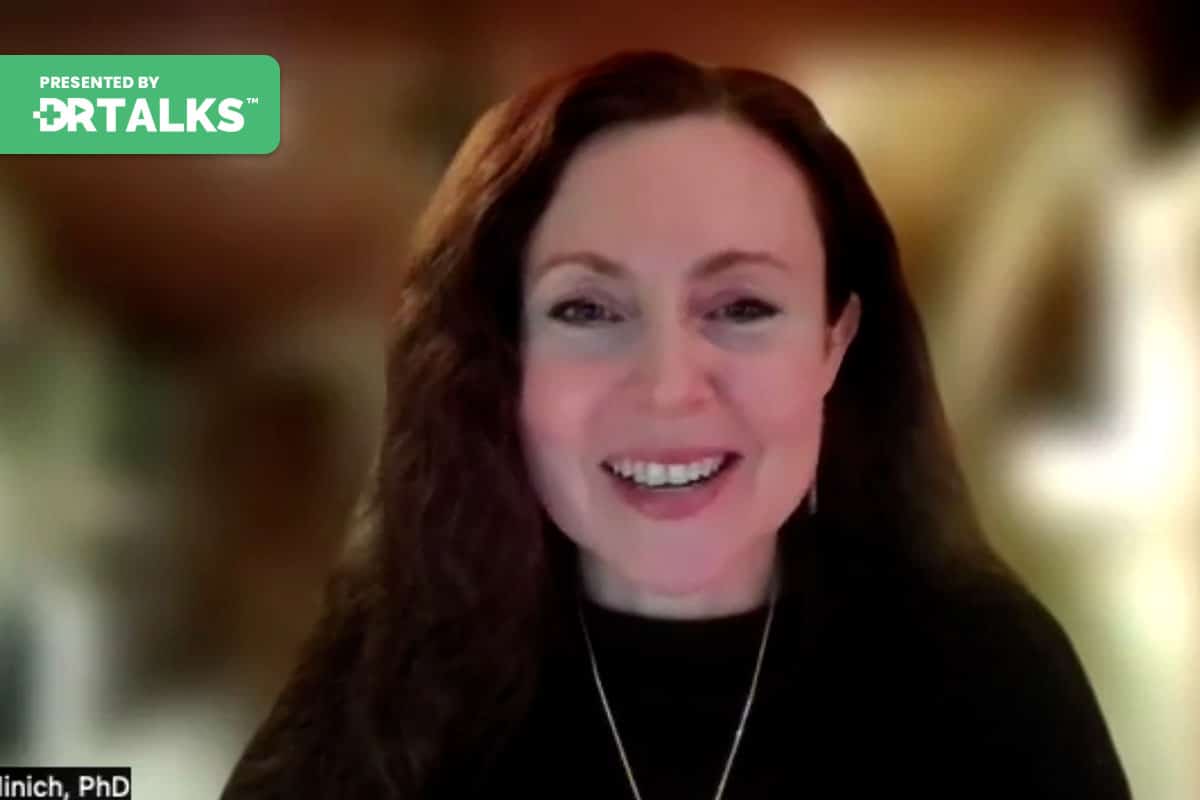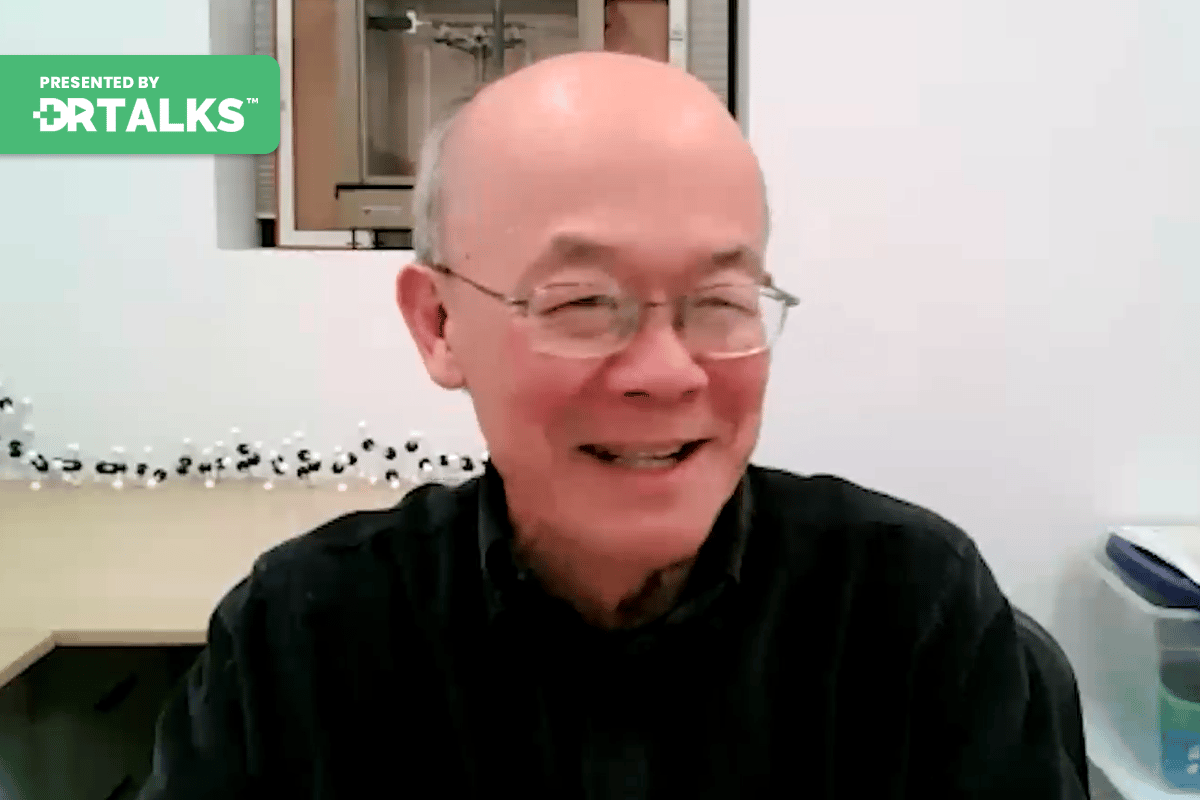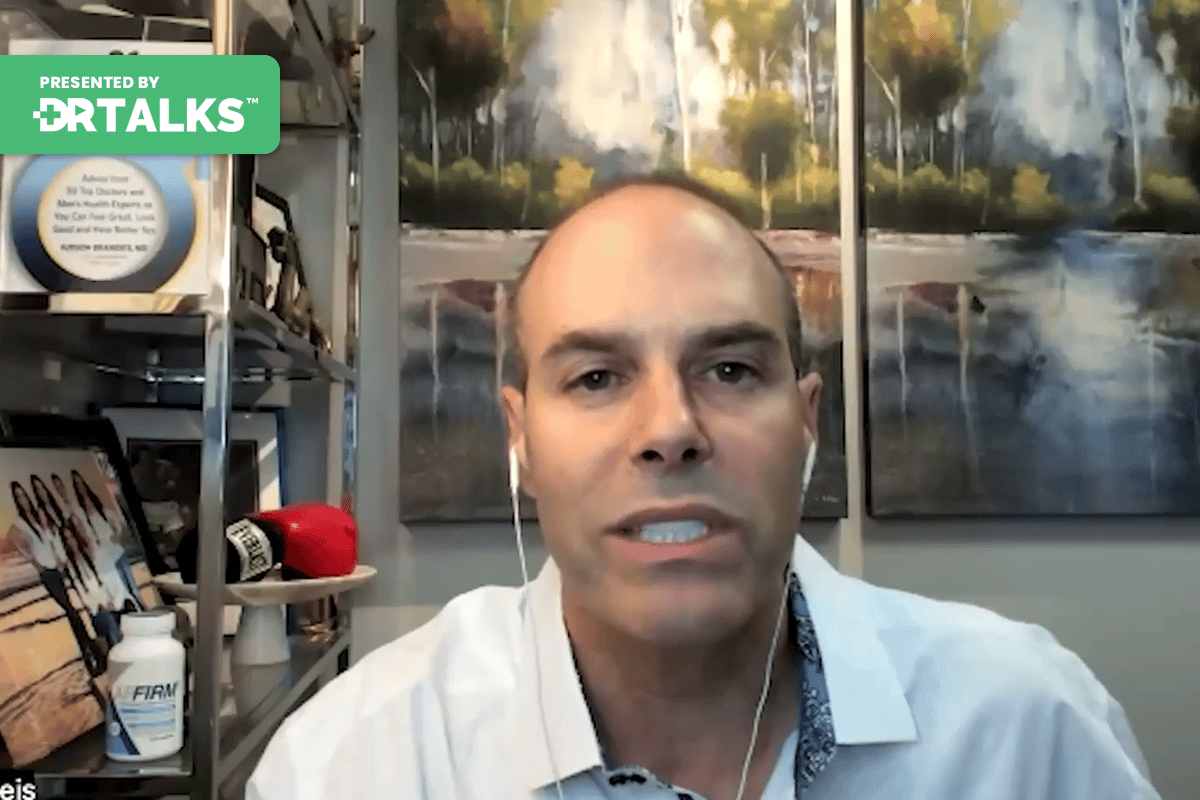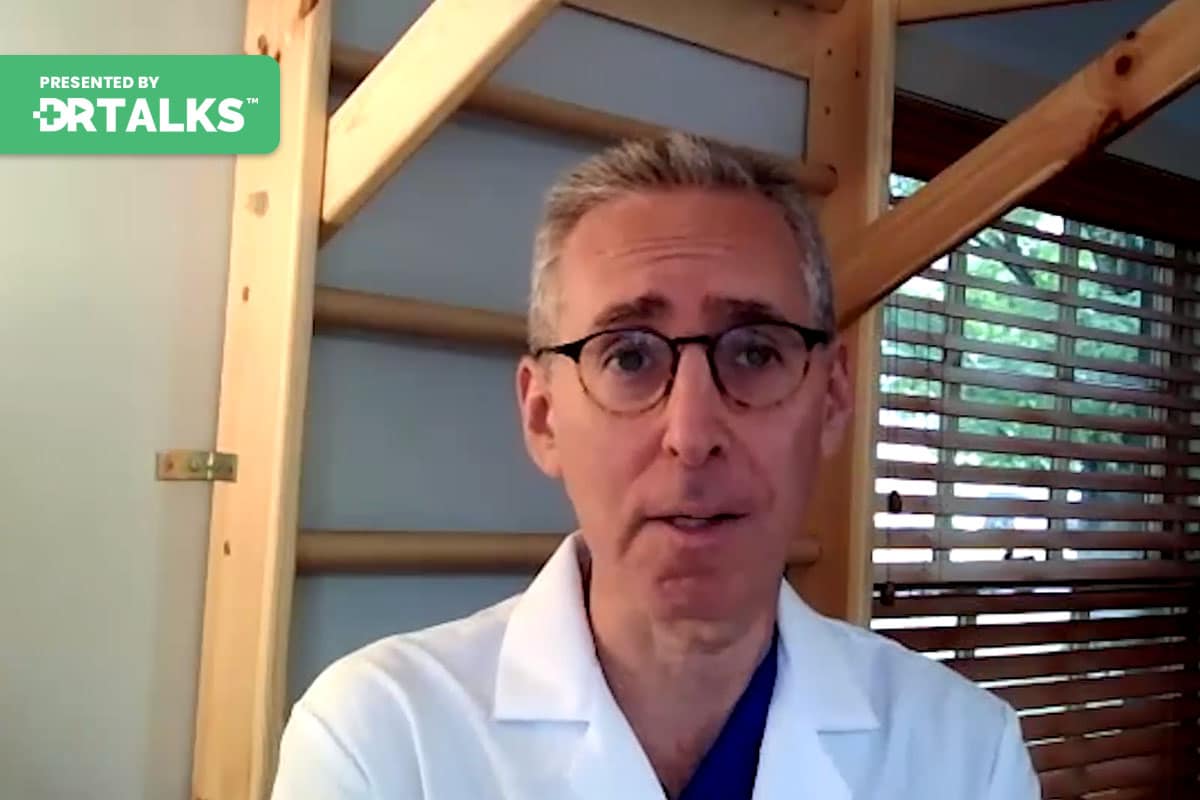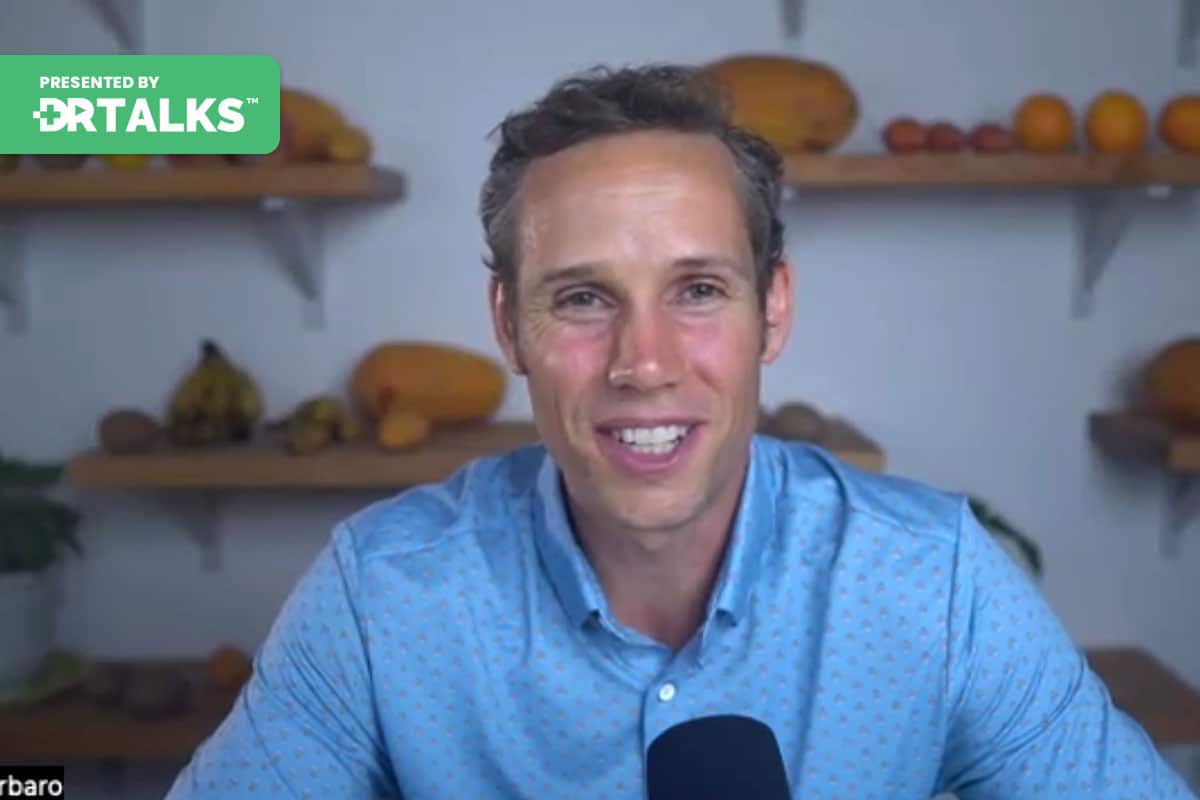Join the discussion below
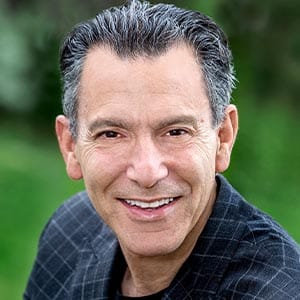
Joel Kahn, MD, FACC of Detroit, Michigan, is a practicing cardiologist, and a Clinical Professor of Medicine at Wayne State University School of Medicine. He graduated Summa Cum Laude from the University of Michigan Medical School. Known as “America’s Healthy Heart Doc”. Dr. Kahn has triple board certification in Internal... Read More

Deanna Minich, MS, PhD, FACN, CNS, IFMCP
Deanna Minich, MS, PhD, FACN, CNS, Certified Functional Medicine Practitioner (IFMCP), is a nutrition researcher, educator, and functional medicine-trained clinician with a unique approach to nutrition that combines physiology and psychology. She has served on the Institute of Functional Medicine’s Nutrition Advisory Board and curriculum committee, in addition to being... Read More
- Each grouping of colored foods have a unique role in healing and the heart is best served by green foods.
- Although legumes, peas, and beans may contain lectins, when properly cooked, the “anti-nutrients” are destroyed. These are nutritious food choices.
- The method of cooking food can influence whether the meal is inflammatory and not. Avoid frying, grilling, and BBQ, favoring lower heat, simmering and steaming.
- Bacon is a particularly toxic food choice that causes aging, cancer, and heart disease.
Joel Kahn, MD, FACC
Here we go. Alright everybody, this is real time. We’ve got one of the world’s experts and food is medicine and I think I’m going to give her an opportunity to explain what that means. Thank you for joining us again, reverse your heart disease summit and thank you all for meeting Dr. Deanna Minich and she is a superstar. How are you tonight, Dr. M?
Deanna Minich, MS, PhD, CNS
I am doing great Dr. Joel,
Joel Kahn, MD, FACC
Thank you and thanks for taking your time and dressing up. Everybody gets a little bio introduction, yours would take the full time. But you have a masters, you have a PhD or certified nutritional sciences, certified functional medicine practitioner, nutrition researcher, really amazing nutrition researcher, educator. You’ve written some awesome medical papers, research papers, a functional medicine, train clinician and you’ve served on many boards like the Institute of functional Medicine, nutrition advisory board, basically if you think nutrition, you think Dr. Deanna Minich and I mean that seriously just and you think energy and you think just a grace about you and just a different approach to so much wonderful stuff. Six books on nutrition wellness and psychology and I think everybody’s gonna learn a lot from you tonight because this is a reverse your heart disease naturally Summit. And you are the queen of food and that’s what we’re going to talk about. So I use the term food as medicine, talk a little bit about in your practice in your couple of decades of being a leader, what that means you?
Deanna Minich, MS, PhD, CNS
Yeah, that phrase is bandied about a lot. Food is medicine, I think it’s more than medicine though. I think food is healing. Food is connection. Food is emotions. Food is the mind. Food is the spirit. I really see food through this lens that is full spectrum and nature. So yeah, I think food is medicine is just one dimension of where food can actually take us. Food is so interconnected into our daily lives. So, what I have done is look at the rainbow of food through colors, but also the rainbow of food through the many different aspects of who we are and again, the physical, emotional, mental and spiritual aspects.
Joel Kahn, MD, FACC
That’s a very profound answer. And you anticipated where I had to go, which is when anybody knows your incredible work, you immediately are gonna say rainbow diet or rainbow of colors and everything about your website and your books and your beautiful artwork is about the rainbow colors. So how do you relate, you know, artwork rainbow colors to educating people about eating for healthy eating for a healthy heart?
Deanna Minich, MS, PhD, CNS
Well, there’s so much noise out there in nutrition, it kind of feels like, you know, I could go into all of the science and I can start to pick and choose. One of the things that I think you can’t pick and choose and you can arm wrestle is eating more plants. There’s a lot of research about the benefits of eating more plants like fruits and vegetables for reducing the risk of chronic disease, but not just reducing the risk of chronic disease even for helping with mental health.
So becoming a happier person, having a better quality of life, reducing psychological distress. So when I look at the literature on fruits and vegetables and whole foods of color, what I see is that they’re imparting so much to us, they’re changing us at the cellular level, they’re changing us at the system level. And since your focus is on the heart, you know, I I do have a color coded way of how I see these individual colors and the one for the heart specifically, I do believe is green foods.
Joel Kahn, MD, FACC
Let’s go with that a little bit because obviously many people would jump to read and pomegranates and apples.
Deanna Minich, MS, PhD, CNS
That too Yeah.
Joel Kahn, MD, FACC
You know, we’re not, we can be in inclusive and have a little red with our green. But what is it in your beautiful writings about the rainbow diet that you connect green foods and the heart. What what’s the, you know, the specific nutrients? The bigger picture. Where do you see all that we go back to the garden of Eden. What’s up?
Deanna Minich, MS, PhD, CNS
Well, first, let’s just look at a leaf. When I look at a leaf very close, I symbolically see the vascular system. I see all of those tendrils. I see all of those interconnections. And then when I look at a leaf, whether it’s kale or lettuce is or spin whatever it is. When I start to look at the nutritional components, I see things that are good for the heart. So things like magnesium or even full it’s or um you know one of the things that the nutritional components that I do think is getting more attraction is that of nitrates. Sometimes we think about nitrates with things that are red like beets, but greens especially some of the bitter greens like arugula or even things like celery can be important for nitrate activity as well.
And then of course vitamin K, vitamin K one, vitamin K. In my mind is like the next vitamin D. Vitamin K. Is used throughout the body to use for the bone is used for the vasculature, it helps to place minerals appropriately. So there’s this complex web of different nutrients that we get from all the different colors of food. I don’t want to say that for heart health, all you need is green and nothing else but the beauty of green foods especially these leaves is that many time underneath the chlorophyll which gives it that green color. You get the reds, you get the oranges, you get the yellows which are all embedded into that leaf of the plant and all of those colors are really important. We see them in the fall time. We see that in autumn when the leaves start changing colors, we start to see what’s really underneath the green. So I often say to people start with green because green can give you a lot of nutrient density just right off the bat.
Joel Kahn, MD, FACC
And I believe I have learned that as a leaf turns from green to those beautiful shades of bright yellow, bright orange, its depletion of chlorophyll as the tree is preparing for winter. That allows those underlying colors. Like you say you don’t really see but it’s a magic in nature. And I do when I do look in Michigan we have all the leaves come down and we get to see that naked aspect of a tree and then springtime we see everything. But again, but I have to say as a cardiologist when I see those trees device point of leaves, it looks exactly like the arterial system to me now, I don’t always bring that down to the leaf itself, but I agree with you. The branching and branching and branching of the structure of a leaf is very much like the cardiovascular system. So it’s a a beautiful analogy. I will say it’s a little hard to see on these small screens but I put on my most colorful.
Deanna Minich, MS, PhD, CNS
I see it the Rainbow time.
Joel Kahn, MD, FACC
Perhaps there should be a dynamic design. I love it.
Deanna Minich, MS, PhD, CNS
I love it.
Joel Kahn, MD, FACC
You could do is your next adventure but it’s one of the few times people are going to see you dressed up in black.
Deanna Minich, MS, PhD, CNS
Oh, I thought about that for this interview. I was like you know, I’m just going to do some different today and you know it was cold where I’m at. And so I just wanted to get cozy with a turtleneck and this is the one that presented itself. But my wardrobe is actually in rainbow in the morning. I go into my closet and I feel out, you know, what is the color I most need today. So you said food is medicine. I think color is medicine. We get colorful foods, We can have colorful moods, we can have colorful spaces. All of that is changing our psychology and our psychology is changing our physiology in the heart. The entire cardiovascular system, I would say is very much connected into our psychological distress. So if we’re calming the mind with something like a cooling color or a color that we really need. You know, black to me is very grounding.
It’s kind of neutral. It’s kind of like um, what I was needing today was just kind of getting down into some basics of getting some things done. So there wasn’t a lot of like orange and flowing or red. I actually could have wore red because red is very much an active bigger color. It is connected to the vasculature. I like that you brought up things like red foods. I was just in Cyprus and there’s the celebration there, pomegranate. So I went to a pomegranate juice juice stand where they were juicing fresh pomegranates, which grow right there and pomegranate at least in the Mediterranean is a symbol of fertility, but we know it also has application to things like metabolic detoxification, cardiovascular health, so many things. And I think of lycopene. Lycopene is important for the heart. There’s an association there between that particular plant based carotenoid and heart health. You know, and that’s what we see in that leaf when it turns color, when we see the red. We need to be thinking of all of those red carotenoids or if it turns orange, the orange carotenoids or the yellow ones. So all of those beautiful that is nature’s art and that art becomes the art that drives our cellular beauty in so many ways.
Joel Kahn, MD, FACC
And follow up on your comment, There’s actually little aspect of nutrition. I’m not salad on leafy greens rich in vitamin K one. If you open my refrigerator to see a jar of natto beans because I will sometimes throw them on a salad to get vitamin K two, how to learn the taste and the texture and the goofiness of natto beans. But they are available on big box sellers. Nowadays they’ve become a little popularized how able is the human body to take a big arugula salad rich in vitamin K one and convert to vitamin K two or it doesn’t happen efficiently and you need to derive it from a supplement or from a few foods like natto.
Deanna Minich, MS, PhD, CNS
Yes, that’s a very good point. There are different forms of vitamin K. And so I only spoke to one. But as you mentioned, there’s vitamin K two, vitamin K two is found in different kinds of food. Typically fermented foods like you mentioned, although not everybody is a big fan of natto. In some cases the gut microorganisms depending on which ones you have can also manufacture some degree of K two, but usually not a lot. So fermented cheeses, as you mentioned, fermented beans and products of various types and vitamin K two does have a little bit of a different function than vitamin K one. So it’s a complex fat soluble vitamin. So it is good to get diversity. This is where diversity of our eating comes in, how some days it’s good to have a little bit of not. Oh, but then maybe you rotate and then you know, you get different things from foods so that your nutritional status is more sound. In fact, many times what I say is if people can just focus on dietary diversity, it’s protective for so many things. In fact, even if I can recall correctly, there was a study looking at blood pressure and how when people had I think it was eight or more servings of fruits and vegetables like that was a threshold of dietary diversity that you needed to have some level of diversity in that intake that that was protective to help with vasculature and even high blood pressure.
Joel Kahn, MD, FACC
All right, so I mean before we go away from the colors in the rainbow diet, tell us a couple more blue green. There are blue green foods out there any significance to the body?
Deanna Minich, MS, PhD, CNS
Well, let me go through the rainbow order quickly. Just so everybody gets grounded. I call this the color code. So red foods I see is corresponding to inflammation as well as the immune system, which definitely ties into the heart. Orange foods, which I see connected to the carotenoids largely can be connected into reproductive health, fertility, oxidative stress such as in sperm or even the ovaries, which are connected into certain carotenoids. Yellow, I see as digestive colors. I think of the acids of lemons, I think of ginger, I think of pineapple. Then I think of some of the prebiotic fibers of starchy yellow foods green as I already mentioned. I see that as the heart color. And then we have blue purple, which is connected to the brain. So, looking at things like blueberries, blackberries, figs, purple varieties of foods that aren’t always purple and color like purple cauliflower, purple carrots, purple broccoli, purple brussels, sprouts.
There’s something about each of these colors which aligns to certain phytochemicals that have certain functions in the body. So they’re not at all really tight boxes, like, well, it’s only blue purple foods that help the brain, but in general, there’s some kind of pattern recognition that we see in the research around those things and I did publish an article in the journal of nutrition metabolism on that. So, I as a scientist, I like to look at those patterns and this is what I emphasize about eating the rainbow, important to get all those colors so that we get the functional signature of those different colors for the whole body. And if we’re fortifying the brain, we’re helping the heart, we’re helping the heart, we’re helping other systems, this is functional medicine. Integrative medicine.
Joel Kahn, MD, FACC
Fantastic. And for people that are interested in following up on this Dr. Minich has a book called the Rainbow Diet. I’ve read it, it’s a wonderful book. It’s got a beautiful color. She has other books too, but picks up specifically on this color guide, This rainbow guide and I’d encourage everybody to learn more about this. So, I mean, we’re trying to avoid food fights here, but people are confused. They’re hearing about a one color diet called the carnivore diet. The real antithesis of what we’re teaching here as the science behind heart disease reversal using food, which is a very colorful, very rainbow plant diet. Any comments from your nutrition research on the long term success of a diet that’s largely or completely meat based, that’s called a gray diet or a gray red diet?
Deanna Minich, MS, PhD, CNS
Wow, I hadn’t heard it referred to as a great red diet. Well, as, you know, I am a big advocate of personalized nutrition, This is the wave of the future. Looking at gene variants, looking at a person’s functional laboratory markers, looking at their environment, their taste preferences, all of those things. So yes, the carnivore diet, which is, you know, I’ve seen different renditions of the carnivore diet actually, it doesn’t seem like it’s only meats in some cases, it seems like some carnivores bring in some degree of fruit and even honey. So it seems like there are variations on the theme. But in general what we see with the carnivore diet would be that we don’t have the inclusion of plants and the inclusion of plants I think is really important from a number of different aspects the fiber, the vitamins, the minerals, the thousands of phyto nutrients. It’s not to say that you don’t get that in a carnivore diet, but you’re getting it indirectly through the animal.
And you know, I think for some people, so I was recently on pub med and that’s like a library of all of the different scientific publications that are peer reviewed and such. And there were 13 when I just typed in carnivore diet, there were 13 published articles, you know, now the Mediterranean diet is probably upwards of like 8000. So what I would say to you is that we just don’t know enough. Sometimes we hear anecdotal reports like, oh, I feel so much better on a carnivore diet. You know, some people have concerns about the toxins that get interwoven or incorporated into fruits and vegetables and they’re concerned about toxin load. So for that reason we know to again be diverse in our offerings and also whenever we can choose organically grown. But yeah I mean I think sometimes we find ourselves through different dietary patterns. I think when we eat a different way it changes who we are in body in mind and emotions and you know just our personality can shift. We learn a lot about where we need to go And so maybe temporarily for some people that could be an acceptable approach for themselves. I just don’t think we have a lot of research on the carnivore diet.
Joel Kahn, MD, FACC
And certainly when you restricted even to specifically cardiovascular disease and I have a clogged artery. I’m trying to work on stabilizing or reversing it. We have zero data on it.
Deanna Minich, MS, PhD, CNS
That’s a good point. That’s a very good point.
Joel Kahn, MD, FACC
And are you willing to experiment with your health and something that might load you up with saturated fat and pesticides and herbicides and other concerning components that have to be in meat. So you’ve written a brilliant article there the last 56 years. A lot of discussion. I’ll pick out lecterns good or bad and for the audience sake in a minute I’ll ask you to tell us what election is ox ill. It’s again we’ll talk about that good or bad you wrote a paper called, is there such a thing as anti nutrients and a wonderful paper? The very long scientific paper and I give you credit, it’s very comprehensive. So tell us what elections are briefly where we find them and from, you know from your best view, largely good foods properly prepared, largely dangerous foods properly prepared.
Deanna Minich, MS, PhD, CNS
Great. I’m so glad that we’re gonna talk about what’s called anti nutrients because I promote plants and I talk about plants wherever I can go and talk about the rainbow. One of the biggest push backs was that people would say, but I can’t eat plants because they contain anti nutrients. So then Western Petrosky and I took the time to just roll up our sleeves and say let’s explore the science, what does the science say about Lichten oscillates? Tannins facilitates phyto estrogens. You know, we went big and broad on this, even Goitrogens, which we have heard about as it relates to anti nutrients. So what are elections when elections are glycoprotein? So they are complex structures found in plants, typically legumes and where they become problematic is when people eat raw legumes. So we have these structures which can be perceived in the body as inflammatory. So now if we’re cooking and processing and autoclave ng boiling are legumes and going through all of the right procedures and eating them as they have been eaten traditionally. So throughout time and not in some other fashion. So we’re sprouting, we might be you know, going through a rinsing and soaking process and then cooking them adequately. We should have negligible elections. Now Dr. Vij Donnie, who is an immunologist, has also done some work on immuno reactivity of certain individuals or certain patient population types like people with autoimmune disease. And it does seem that in certain people there might be a certain increased reactivity to some of these elections.
The problem that I have is that I find it very difficult to just isolate and say it’s elections unless you have a bolus of elections and you say eat these elections, let’s say your response. But many times, I mean all of the time the foods are complex. They’ve got fibers, they’ve got other things in them. So I think it’s difficult to just isolate and say, well it’s just elections. There just isn’t the degree of clinical data that we need in order to say avoid all of these foods versus the amount of clinical data we would see in order to support eating some of these foods which have these elections.
Now there is some initial more cell and other types of pre clinical work that might suggest that lecterns may even have some benefit. I think that some of their immune modulating activity is being explored and you know Joel, what I think at the end of the day is that so much of how we respond to certain foods can also say something about the state of our gut, the state of our gut microbiome and in certain cases certain foods might be triggering a response because we might have some imbalance or dysbiosis in the gut. So I think we have to look at the whole many times. It’s not just pointing the finger to the food. The food is actually being the messenger to say there’s something awry in the gut. So as it relates to elections, I would say if we’re eating foods in their traditional format, we’re cooking them, we’re soaking, we’re not eating raw kidney beans, then I think that, you know, we’re pretty much on a favorable side.
Joel Kahn, MD, FACC
Yeah, I have talked a lot of patients over the last 33 years and I don’t remember any of them ever telling me, man when I’ve got the jones, I’ve got to get some raw kidney beans and chew on them. Just, it just, it just doesn’t happen. And of course there could be an accident where you just didn’t cook food properly. And there have been reports, but overall you’re counseling a patient, you’re talking about blue zones, you’re talking about fiber, you’re talking about minerals, you’re talking about amino acids, you’re okay with peas, beans and lentils properly cooked.
Deanna Minich, MS, PhD, CNS
Absolutely, Absolutely. I mean there’s such a great protein and fiber source and rich in minerals.
Joel Kahn, MD, FACC
Alright, we’ll switch gears, but same topic a couple of years ago, famous Australian hunky actor Liam Hemsworth announced I’m no longer vegan because I got kidney stones and and he reported that he was making a green smoothie every morning with like a pound of spinach, Always spinach every day, every day, every day. And people have heard about oxalate, so why don’t you give us again a minute or two, water oxalates and how big an issue is it really? And you know, none of us eat spinach because of that risk or swiss chard or we just rotate our foods. What’s your take on that as you wrote in the article?
Deanna Minich, MS, PhD, CNS
Yeah, So oxalic acid, you typically do find bound up in minerals in some of these green leafy foods. And if we take the case that you just described where he was having large amounts of juiced spinach repeatedly, you know, again, we’re taking something out of its natural context and traditional way of preparation. And sometimes I think about that with the celery juice craze, you know, these 16 ounces of just raw celery every day. I think again, anytime we’re doing something in large amounts out of its natural context, over and over again were subject to some kind of change or some kind of response. So the thing with oxalate is oxalic acid is highly soluble in water. So when we steam or we soak we properly cook these foods, modest amounts of spinach, things like that. Swiss chard should be acceptable in most people.
There is. However, a small percentage of people who are hyper absorbers of oxalate. It’s and there may be some translation over into kidney issues. You know, this is a little bit debatable in the literature because it seems like what the stones could be signaling is actually a mineral insufficiency or imbalance. So when we have adequate calcium and magnesium in the diet and even our consuming some of these oxalate containing foods with things that contain calcium and magnesium, especially calcium that we may not see that same effect. But there is a small percentage of people that may be hyper absorbing. So we should probably have that in the back of our minds. There are laboratory tests to look at um oxalic acid and kind of look at levels. There’s also the phrase, the connection to the gut microbiome, There’s the term oxalate biodome. So there are certain microorganisms that seem to metabolize oxalic acid. So again, is it signaling a gut dysfunction, a mineral imbalance? Or maybe we just shouldn’t be doing such large amounts of these raw juices without the balance of other things in the diet.
Joel Kahn, MD, FACC
I think there are many different things to draw upon.
Deanna Minich, MS, PhD, CNS
And not all greens are equal in terms of our oxalate concentration. I think spinach happens to be very high, whereas kale and arugula are not, so we’re going to follow your rainbow diet. We probably even should vary our greens, We cannot get stuck on one green all the time and particularly maybe make sure that’s not spinach, we’re stuck on all the time. It’s great to have some but moderated with other greens and that will you know eliminate for all the patients I’ve talked to over the years consuming large amounts of greens. You know, I’ve not seen the Liam Hemsworth story with any frequency, you know.
Deanna Minich, MS, PhD, CNS
Have you seen with all the celery juice? Have you seen any?
Joel Kahn, MD, FACC
I’m not you know, I’m not here to slam the celery juice.
Deanna Minich, MS, PhD, CNS
And I was just curious because it’s kind of a trend.
Joel Kahn, MD, FACC
I’ve not seen a detriment to it but I haven’t had a lot of people do it in my practice. That’s a lot of patients. I mean I think the phase is wearing out right now and I don’t see many people bringing it up. It did come up a couple of weeks ago in the clinic, let’s talk about a hot topic also of anti nutrients and you know, just give us your academic perspective what what you tell your clients but soy based foods and let’s talk to the whole, you know, close to nature, edamame beans, Tempeh organic. You know, I mean I do we should we run for the hills as so many people have heard or do we enjoy them mixed with other foods.
Deanna Minich, MS, PhD, CNS
So there’s a spectrum of soy in my view. You know we have taken a perfectly healthy legume and we have created soy looking products, right? Where we have processed soy. So if we were just speaking to the ones that you mentioned, so the miso tempeh tofu, you know, the whole food soy edamame, right? I mean these historically over time have been associated with cultures that live long and have reduced rates of chronic disease and soy soy isoflavones and many of the things that are within soy, these flavonoids and such, they’re modulating so many different pathways and beneficial ways are helpful for metabolic detoxification. It’s a great protein source, so I’m not against so as long as it’s good quality and it’s not processed, it’s in its whole food form. I think it can be a healthy food for many people. And again, I think it’s important to rotate proteins. So if you’re only eating vegetable protein, then I think the host of different types of legumes that you have accessible to you. I think it’s really important.
So I eat soy, eat soy products and I think that I just got through teaching the detox module for clinicians and we include soy on that particular detoxification module because those isoflavones are pretty potent. Now, the only thing I want to mention is that some people might have mixed reactions to soy, I mean if they’re allergic, they obviously can’t consume soy. So that’s something we just have to put down for all foods. If you’re allergic to a food then no matter what, you know, you wouldn’t want to consume that for for women, let’s just take perimenopausal menopausal women for them in order to reap the benefit of some of the effects of soy for perimenopause.
That requires a certain gut microbiome to effectively convert some of those soy compounds to even more active compounds to get the benefit for things like the heart and the bone. So there’s a compound called equal, which can be created from the gut microorganisms connecting and metabolizing some of those things in soy that can give benefits for the skin for a number of different things. So if somebody has, again an unhealthy gut and eats processed soy, I wouldn’t expect a very healthful result, but if somebody is fostering a good healthy gut, they’re eating these whole soy foods. I think that that is, that’s excellent. And again, bringing in different legumes.
Joel Kahn, MD, FACC
Okay. And obviously sort of a white food in your rainbow, you do have some white foods like cauliflower, so we can get one more color on our rainbow wheel there. If we occasionally use some organic tofu, I guess Adam mommy gets us back to green colors, but it does.
Deanna Minich, MS, PhD, CNS
And when I, when I talk about white, white is you know, somebody recently commented to me that I should have a clear in the rainbow and I said, well that’s actually white and the way that I see white is that it’s connected to fasting, no food blank slate, it’s we let go, we have a clarification purification process. And you know, I grew up with a health nut mom in the 19 seventies and I remember her saying the whiter the bread the quicker you’re dead. And I think she got that from like Adele Davis or somebody during the 19 seventies. So I always had in my mind that white foods, white flour, white sugar, whatever it is, white salt was bad. But there are some good white foods. And white again, I just feel like clarifying and purifying the body, having a little bit of fasting.
Joel Kahn, MD, FACC
Okay, I don’t know that we’ve talked enough. Not just this interview, but with other wonderful conversations, but the role of inflammation and creating heart disease. The goal of lowering inflammation to halt and reverse heart disease. I mean, what’s your comments about the rainbow diet? Rainbow plants and what impact it has on inflammation or specifically vascular blood vessel inflammation.
Deanna Minich, MS, PhD, CNS
Inflammation is cornerstone to so many chronic diseases, especially heart disease? Heart disease, in my mind, is an inflammatory type of condition, you know, body on fire vessels on fire, heart on fire. And so when we eat the rainbow, we get that balance. I mean, you can’t have inflammation if you’ve got all of these beautiful, whole nature based colors. Coming in, those phytochemicals are putting inflammation to rest at the cellular level. So one of the things you might be a little surprised by this, but I’m not gonna, I want to focus on not the foods, but the ways of cooking foods, I think this can be very inflammatory. So when we see grilling, broiling and frying, this causes inflammatory compounds to form in the food. And when we eat those inflammatory compounds, they up regulate inflammation in our bodies. So sometimes we can have healthy rainbow foods that we make inflammatory just through the cooking process.
So, better methods of cooking would be steaming, poaching just lightly, perhaps sautéing although my PhD was an essential fatty acid. So it was all about fat. And I am not a huge advocate of cooking with large amounts of fat, I think you damage and it’s nothing to do with, you know, being low fat or anything like it’s just really you don’t want to damage the oil, even some of these high smoke point oils. So, my preference and what I advocate to people is when you’re cooking, use water whenever you can, water is a great conductor of heat, try to refrain from the oil until after the meal is cooked. The other thing to help with inflammation is to include spices as you’re applying heat to the food. The spices helped to offset some of the formation of these inflammatory compounds. So when people say, well, Deanna, I’m just not ready to change my diet. You know, you’re talking about eating the rainbow, but I’m eating brown yellow and white foods. What I will suggest to them as a stepping stone is okay, you may not want to change your foods, but let’s change how you’re cooking that food. If you’re going to have bread, I don’t want you to toast it. You know, you’re getting all these inflammatory markers. I think you and I are on the same page about bacon.
Bacon is has like one of the highest advanced like patient and prod. I mean, eating bacon is like, it’s aging you right, because of the inflammatory compounds. And, you know, it’s also exciting. So there’s this term inflammation where we have the low chronic levels of inflammation, maybe we don’t have an injury, but we have like a low level of inflammation that’s very aging to the body. It wears us down faster. You probably have seen in the literature, there’s a new term coagulating, that inflammation, aging is connected to greater degrees of coagulation, which is not good. We don’t want our blood to be clotting and have all kinds of issues with blood flow. Right? So coagulation, I think is a big thing and keeping our vessels open, having enough, you know, just even getting back to water and adequate hydration. So, with inflammation, as you know, it’s a big deal changing how we cook. Getting more of the colors moving away from all of those ground yellow and white, high aging foods. I mean, so many things we can do and of course, a lot of the toxins like what do we cook in?
Are we imparting plastics? You know some people are entering into the holiday season. They’re thinking about cooking their turkeys and bags and plastic. Or they go to the grocery store and they buy those chickens or whatever it is underneath the heat lamps in the plastic or buying processed foods wraps that are wrapped in plastic vegetables sometimes or even wrapped in fine plastic in the stores. I saw that when I was in Europe not too long ago all this plastic is not a good idea for our cardiovascular system. This is very disruptive and very inflammatory as well.
Joel Kahn, MD, FACC
Well that was great. I felt like we were on the view there for a minute when you let it loose on bacon very much enjoyed that. And just for the people that
Deanna Minich, MS, PhD, CNS
I actually do think of you. I’ve got to say just you know.
Joel Kahn, MD, FACC
It’s you know proven to cause cancer according to the World Health Organization and I think we can probably conclude it’s proven to cause cardiovascular disease just based on deck of research. But you did drop a term there. That again I want to just make sure listeners got when you were talking about the method of cooking being inflammatory. And then you drop the scientific term a g advanced location and product. And certainly one of the most ironic overlaps. Like I often think endothelial dysfunction is E. D. And erectile dysfunction is E. D. And the emergency room department is E. D. So everything about damaging your vessels have a similar but A. G. E. Aging and advanced education and product is the technical term for why that toasted. It is more inflammatory than untoasted bread. But particularly animal foods. When you fry animals you just turn them into inflammation bombs. I’m not suggesting people start eating boiled chicken because despite the fact that it’s discussing it’s also harming the environment and not very nice to the chicken. So we’ll leave that off the menu but go ahead.
Deanna Minich, MS, PhD, CNS
But not even just the meats. I just recently was looking at a list I was teaching on this topic and I showed the list of ages. So of course bacon and grilled chicken and fried chicken. They’re all at the top. They’re off the charts and then you have processed cheeses. Can also behind advanced location and products. And you know what else is nuts. Now for the people that are focusing on you know having more vegetable sources, Roasted nuts are going to have higher ages than raw nuts. Why? Because in that roasting process of course anytime you have that color change in the food that can denote there’s been damage and that damage even though it tastes better for us to have toast versus a piece of bread. That damage that has been done is actually um that’s very inflammatory to the body. So even roasted nuts. I want to toss that into the mix here, not as high as the grilled meats, but if you’re eating roasted nuts all day and you’re wondering why you’re still inflamed, maybe look at that.
Joel Kahn, MD, FACC
Yeah. Again, people struggle doc, my high sensitivity c reactive protein is up and it’s probably not intuitive that the first question is, do you fry your food? Are you barbecuing the heck out of your foods? Even a Portobello mushroom barbecue to a crispy, crispy dark has more inflammation potential than a lightly cooked, properly cooked Portobello mushroom as an example in the plant based world. So this has been wonderful. Tell us about you have a book called the whole detoxify. Remember?
Deanna Minich, MS, PhD, CNS
Yes.
Joel Kahn, MD, FACC
Wonderful science based way to improve your body’s ability to handle the environment we live in with chemicals everywhere. Right?
Deanna Minich, MS, PhD, CNS
Yeah. So in that book it’s that is the book not the rainbow diet is more like a discussion manual about like Just the questions to ask yourself about your eating. But the whole detox book is, I would say it’s beyond detox really, it’s really about the rainbow. And it gives a 21 day program inside with tracks to eat the rainbow. So the first three days are red foods. The days four through six are orange foods and we go to yellow foods and we go to green and through this whole process of exploring color and themes of the day. It’s really looking at the physical, emotional, mental and spiritual aspects of ourselves and I marry the foods to things like emotions, thought patterns, physical movement, which is so important for the heart. In fact, I was just looking at studies right before you and I jumped on forest bathing, you know, being in nature or viewing a forest seems to have benefit for helping our nervous system to be more in balance.
So the parasympathetic and sympathetic balance which we know impacts the cardiovascular system pretty profound. That just being in nature, being in green can change our psyche through the smell through the, you know, all of those aspects. And this is why, you know, nature is healing for the heart. I love it that you’re a cardiologist by the way, because I just, well, the heart to me just holds are so much of our life force, right? The heart is there’s something special about it. Even in traditional Chinese medicine, the heart is seen as the holder of your destiny, the holder of your consciousness, the seat of your soul. It’s not the they don’t even acknowledge that. I mean, I’m married to an acupuncturist, you know, Mark. But you know what I’ve learned from that tradition is that there’s something really beautiful about the heart, the heart space in terms of who we are as people.
Joel Kahn, MD, FACC
It’s an underappreciated miracle that we should wake up every morning and give thanks that it’s continues to work and your great contributions through this conversation. Your books are your blogs. Where can people find you? I mean some of your social media posts are some of the prettiest and most creative. But website and your favorite social media place to find you.
Deanna Minich, MS, PhD, CNS
Sure easiest is my name. DeannaMinich.com. And on my website I’ve got all my social media handles Instagram. Facebook under Deanna Minich PhD. But yeah Instagram I have some pretty pictures on Facebook. My professional page. I have more studies I would say if you’re looking for more of that content.
Joel Kahn, MD, FACC
I see a post right here on Instagram probably today on the science and spirituality of the cardiovascular system. What a beautiful view on it. You tried all Yeah, I thank you so much. I see that now. But all your posts are you know this beautiful combination of content and science and then art and there aren’t too many people that have that skill and put it all together. So thank you for all you do. Thank you for taking the time away from your busy schedule, your travel schedule and gonna help a lot of people tonight. They’re going to be a lot of steamers and boilers and we’re gonna cut on the friars and the grillers. Okay?
Deanna Minich, MS, PhD, CNS
That’s good. Good news. I’m glad we can contribute.
Joel Kahn, MD, FACC
God bless.
Downloads

